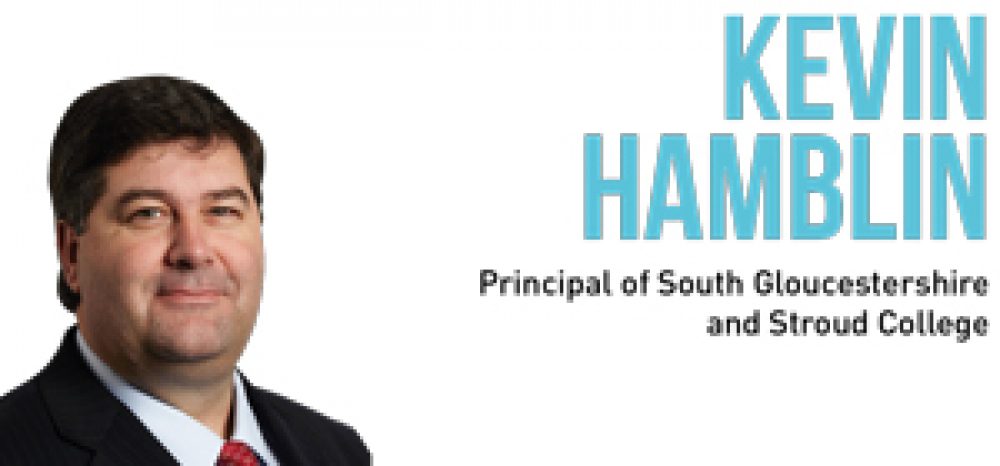Kevin Hamblin outlines the journey his Ofsted grade two-rated college made in order to take over sponsorship of a nearby academy.
South Gloucestershire and Stroud College (SGS College) has announced that we will sponsor an under-performing secondary school though our newly-formed SGS Academy Trust.
If anyone had asked me four months ago if we would be in this position I would have doubted it.
I knew little about Multi Academy Trusts (MATs), how one would set about forming an MAT, and I had thought even less about why we might wish to do so — after all, haven’t we got enough on our plate right now with an expectation that funding will be even tighter after the election?
This all changed after a chance discussion in October with the South West’s newly-engaged Regional Schools Commissioner (RSC), Sir David Carter.
At the end of that meeting, Sir David asked if the college had considered forming an MAT.
As I see it, colleges can sometimes be victims of the success or failure of their feeder schools.
Or, more precisely, if there are schools in the community in which a college operates that are struggling financially or academically, sooner or later the effect of that performance will affect young people, many of whom will find their way to college.
Our intention is to sponsor primary schools feeding into these secondary schools, to produce an ‘all-through’ model
An MAT will allow SGS to work with feeder secondary schools to improve their academic performance, and our economies of scale will easily absorb back-office functions, freeing up income to spend on student-facing services.
Furthermore, as the MAT develops, our intention is to sponsor primary schools feeding into these secondary schools, to produce an ‘all-through’ model.
So, from that chance encounter in October, we have been taken through the process with considerable support from the Department for Education (DfE)and RSC staff.
Unusually, in my experience, the process has been output driven, with little additional bureaucracy, and the staff assigned to support SGS have all been very responsive, with a ‘can-do’ attitude.
This has involved many late night and early morning conversations with DfE staff as we have navigated our way through the process involving several ministers and government departments.
Within a week of agreeing with Sir David to look into forming an MAT, two excellent staff seconded from the DfE, and working for the SW Academies Group, visited me. They became an invaluable asset and have taken the college through the process and support available to form an MAT and to support any costs incurred.
A series of steps were necessary to keep governors informed and supportive, but also to ensure that SGS was walking into this initiative aware of the risks of such a move.
After the application for funding was agreed, which would cover the costs of the legal formation of the MAT, the Education Secretary’s approval that SGS was a fit and proper organisation to sponsor up to three schools initially was given.
Further funding to cover increased staff capacity, school improvement and due diligence costs was successful, as was a small but not insignificant grant to improve the first school’s ‘environmental appearance’.
We are now working with the school, which will become the first sponsored school in our MAT, subject to governors agreeing to its transfer at the end of this month, and after they have undertaken due diligence.
Obviously, an MAT isn’t for every college — it isn’t something which will benefit the bottom line and it will increase responsibilities for a number of college staff.
But I firmly believe if we can help support our local schools to be more successful, rather than catching the fallout from their underperformance, then there will be dividends for the young person, the community and post-16 providers in the future.









Your thoughts